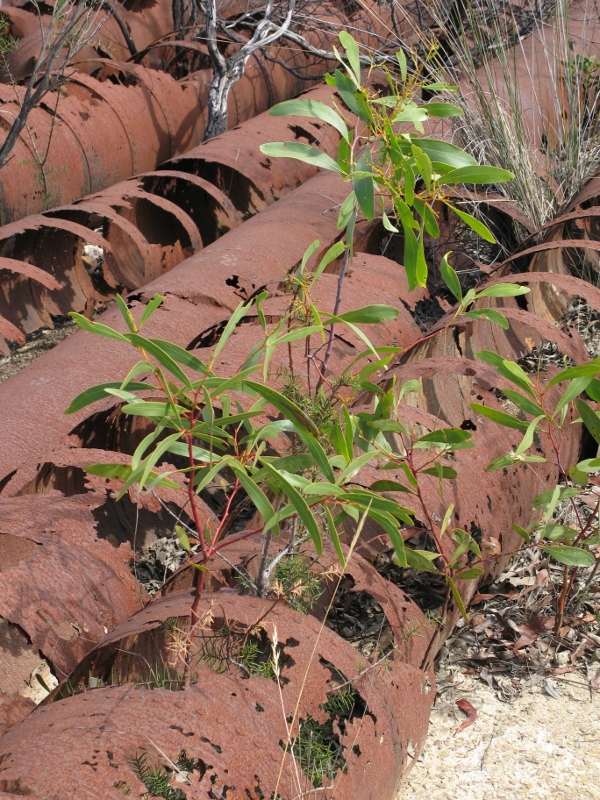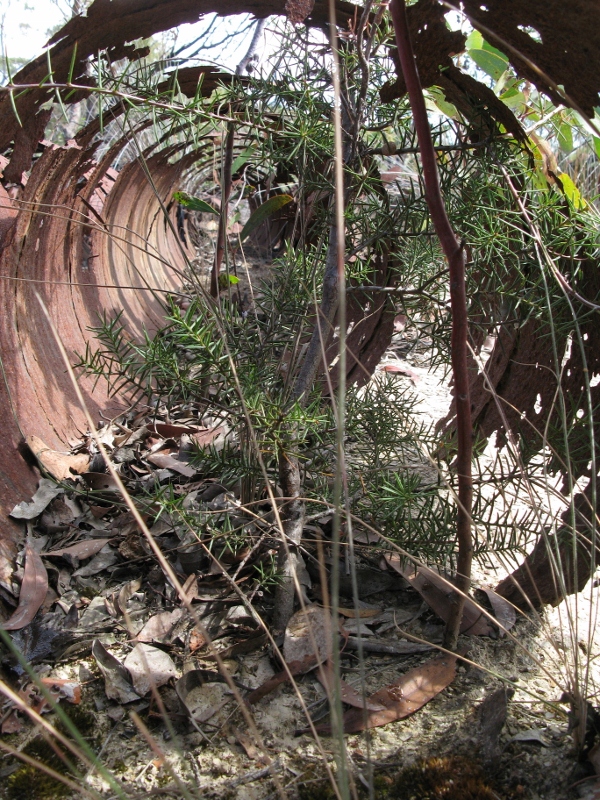The photo below shows old sluicing pipes in the Fryers Forest. As they decay, they provide shelter for the growth of seedlings which will eventually hasten their destruction.
Is this decay the gradual fading of our heritage? Maybe–if we identify ‘heritage’ with old objects.

Nature reclaims the sluicing pipes, Fryers Forest: the regenerating bush is part of our heritage. Photo: Margaret Hogg
The Heritage Action Plan for the Castlemaine Diggings National Heritage Park says:
‘The current forest setting is…an interpretive bonus for the Park. It highlights the transience of mining, demonstrates the severe environmental impact that can result from inadequate environmental constraint, and illustrates some of the resilience of Australia’s native vegetation.’ (page 29)
‘The World Heritage Bureau has recommended greater recognition of the continuum of, and interactions between, culture and nature with respect to the implementation of the World Heritage Convention’ (Castlemaine Diggings HAP, Appendix C page 3).
The Operational Guidelines for the Implementation of the World Heritage Convention (1999) note:
‘Cultural landscapes are illustrative of the evolution of human society and settlement over time, under the influence of the physical constraints and/or opportunities presented by their natural environment and of successive social, economic and cultural forces, both internal and external.’ (paragraph 36)
All these ideas point to an emphasis on change, not preservation of relics. As cultural historian Jane Lennon has put it:
‘Interpretation of the gold rush era has tended to focus on the heydays of the 1850s yet the traces of that era that we see in the landscape to-day are not the same as the rapid environmental chaos that followed then—150 years later the landscape has mellowed and taken on a new cultural identity that awaits deciphering by the discerning tourist. How will this be done? How can the landscape speak for itself?’ (Historic Environment VII 1 1989 page 28)
So–maybe there’s a bit of melancholy in those fading relics: but there’s plenty of compensation in the drama of the recovering bush.

Hakea growing inside sluicing pipes: heritage is not a frozen landscape, but a changing one. Photo: Margaret Hogg




 Click on image for info/order page
Click on image for info/order page Click on image for info/order page
Click on image for info/order page Click on image for info/order page
Click on image for info/order page






















This is a natural decay, and a natural decay of an introduced, alien entity. Let nature take over again, I say.
Thanks for the comment Faisal. The interesting thing about those pipes is that they were part of a destructive process–and now they’re part of the recovery. In a way, they’re part of nature too.